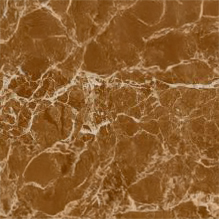
Stucco Marble Altars in Slovenia: Materials, Conservation, and Meaning
Stucco marble or ‘scagliola’
Building baroque altarpieces was usually a complex process, where architects, joiners, sculptors, painters, and plasterers worked together to achieve a result that would suit the commission. Altarpieces that used wood, stone or brick for basic construction, and with highly polished stucco coating over them, are called stucco marble. With this technique that required a highly specialised skilled craftsmen, an excellent and very versatile imitation of marble was achieved.
Stucco marble typically represents a mixture of gypsum, water and animal glue, applied to a hard support such as plastered brickwork or stone or wood, and polished, often involving a final coating of oil and/or wax. To obtain colouration, the base mixture is homogeneously mixed with a pigment, and to obtain decorative marble-like patterning, the application involves kneading the pigment into a heterogeneous moist gypsum mixture shaped into a cylinder, subsequently cut into thin slices, laid onto the prepared surface, smoothed, ground and polished to high lustre.
A great variety of analytical and characterisation techniques are necessary in order to recognise differences in material preparation of different workshops. These results need to be further compared to information obtained from art historical research to distinguish stucco marble workshops active in the territory of Slovenia and placing them in relevant regional and central European context.
Project Objectives
The aims of the project are:
(i) Characterisation of materials used for stucco marble on selected baroque altarpieces in the territory of Slovenia, using non-invasive as well as micro-invasive analytical techniques. The selected methods will provide information about presence and distribution of organic and inorganic materials, even those used in small quantities, which can be important for workshop attribution and can still influence degradation processes. Materials identified in different analysed objects could be important to distinguish stucco marble workshops active in the territory of Slovenia. Furthermore, these results can importantly influence conservation-restoration treatments.
(ii) Detailed examination of state of preservation of baroque stucco marble altars in Slovenia in terms of material degradation and structural properties. These results will help the conservators-restorers to select the most endangered objects to be treated first and to choose the appropriate
method.
(iii) Consideration on most appropriate conservation-restoration treatments. Due to specific structure of stucco marble, adapted treatments should be considered, which will slow down deterioration processes, allow objects to be viewed in their original splendour and possible vacancies filled with suitable materials.
(iv) Cataloguing of all remaining stucco altars and archival studies, combined with art historical analysis of the patronage, architectural models and sculpture will prepare the conditions for a relevant study of the phenomenon of the stucco marble altars in the wider central European territory.
Partnership
The project (ARIS code forthcoming) is funded by ARIS (Slovenian Higher Education, Science and Innovation Agency) and involves:
- Institute for the Protection of Cultural Heritage of Slovenia (Katja Kavkler)
- University of Ljubljana, Faculty of Arts (Matej Klemenčič)
- University of Ljubljana, Academy of Fine Arts and Design (Martina Vuga)
- Heritage Science Laboratory Ljubljana at UL Faculty of Chemistry and Chemical Technology (Irena Kralj Cigić)
Project code: J7-50093
Duration: 1. 10. 2023 – 30. 9. 2026
Please contact us for further information or to establish collaboration.
Scientific impact – papers:
- KAVKLER Katja, LEGAN Lea, KOSEL Janez, KAVČIČ Maša, VUGA Martina, KRALJ CIGIĆ Irena, ORAŽEM Frančiška, TURK Sara, KLEMENČIČ Matej. Stucco marble altars in Slovenia: materials, conservation, and meaning. 1st conference of the Slovenian node of the European Research. University of Ljubljana, Ljubljana, Slovenia Infrastructure for Heritage Science, 22nd November, 2023 https://www.e-rihs.si/uploads/E-RIHS.SI%201st%20Conference%20BoA.pdf [COBISS.SI-ID 176384515]
Scientific impact – presentations:
- KAVKLER, Katja, KRALJ CIGIĆ, Irena, LEGAN, Lea, VUGA, Martina, KLEMENČIČ, Matej. Interdisciplinary insight into baroque stucco marble. V: DOLENEC, Sabina (ur.), et al. 1st International Summer School In Situ Techniques in Preservation of Built Heritage : Ljubljana, 2-4 July 2024 : book of abstracts. 1st electronic ed. Ljubljana: Slovenian National Building and Civil Engineering Institute (ZAG), 2024. Str. 23. ISBN 978-961-7125-06-1. https://www.zag.si/dl/sherezad-abstracts-2024.pdf. [COBISS.SI-ID 205415939]
